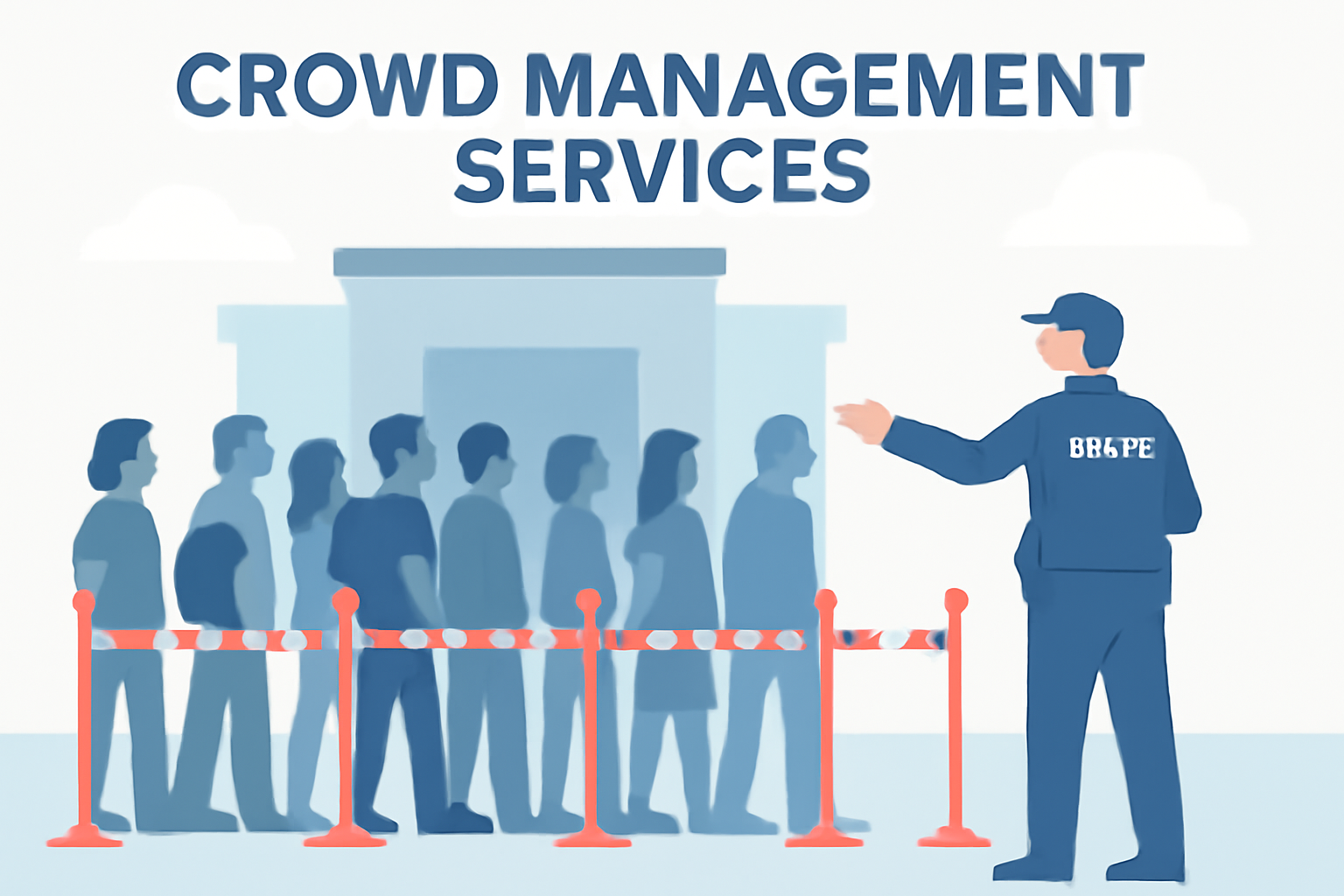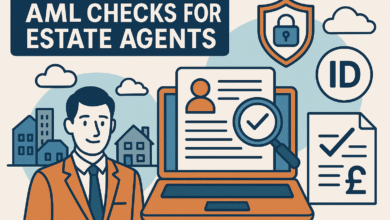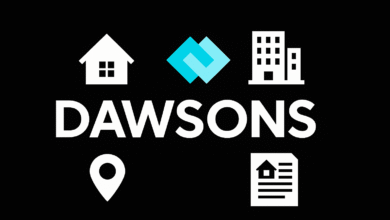Crowd Management Services: Ensuring Safety and Order in Large Gatherings
Ensuring Safety, Order, and Efficiency at Large-Scale Events

Introduction
Crowd management services are essential for ensuring the safety, security, and overall success of events that attract large groups of people. Whether it’s a concert, festival, sports event, or conference, proper crowd management is crucial to avoid chaos, prevent accidents, and ensure a smooth experience for both attendees and organizers. In this article, we will explore the key components of crowd management services, highlighting the strategies, tools, and personnel involved in maintaining public safety.
The Importance of Crowd Management Services
Crowd management is a complex, multifaceted task that goes beyond simply monitoring the crowd. It involves detailed planning, risk assessment, and the use of advanced technology to ensure the safety of participants. Effective crowd management services help to:
-
Prevent overcrowding
-
Facilitate smooth crowd flow
-
Ensure emergency preparedness
-
Maintain public safety during high-risk events
For these reasons, crowd management is a vital aspect of event planning, especially for large-scale gatherings.
Key Components of Crowd Management Services
1. Crowd Control
Crowd control refers to the various methods and techniques used to manage large groups of people. This includes physical barriers, signage, and staff deployment to ensure the crowd moves in an organized and safe manner. Crowd control helps prevent panic and ensures that individuals can enjoy the event while adhering to safety protocols.
2. Event Security
Event security is a critical aspect of crowd management services. Security personnel are responsible for maintaining order, preventing unauthorized access, and responding to incidents as they arise. Event security staff are highly trained to manage potential conflicts, prevent violent behavior, and ensure that security measures are followed.
Security measures often include:
-
Checking bags and belongings
-
Screening attendees with metal detectors
-
Ensuring restricted areas remain secure
-
Managing access points and exits
3. Crowd Safety
Crowd safety involves taking proactive measures to prevent accidents and mitigate risks associated with large gatherings. This includes planning for emergency situations, ensuring that exits are clearly marked, and making sure that attendees follow safety guidelines.
Tools and Technologies Used in Crowd Management
1. Audience Management
Audience management tools help to direct and control the movement of attendees within a venue. Technologies such as digital signage, mobile apps, and real-time crowd tracking can help organizers better manage attendee flow. Audience management systems provide real-time data on crowd density, helping to avoid congestion in certain areas.
2. Public Safety Services
Public safety services refer to the coordination of various emergency services during an event. This includes law enforcement, medical teams, and fire departments, all working together to ensure that the event runs smoothly and that help is available if needed.
3. Emergency Response Planning
Effective emergency response planning is a key element of crowd management services. This involves creating detailed plans for evacuation, handling medical emergencies, and responding to crowd surges or other potential crises. These plans are developed in collaboration with law enforcement, emergency medical teams, and event organizers.
4. Access Control
Access control is an essential security measure to ensure that only authorized individuals are allowed to enter certain areas. This can include:
-
Scanning tickets at entry points
-
Using RFID bands to track movement within the venue
-
Ensuring VIP areas are secure
Proper access control minimizes the risk of unauthorized access and ensures that attendees follow the event’s guidelines.
5. Queue Management
Managing queues is essential for preventing bottlenecks and maintaining a smooth flow of people. Whether it’s at ticket counters, food stands, or entry gates, queue management systems help to organize people efficiently and prevent overcrowding. This can involve staff directing people, using barriers, or deploying automated systems to help manage large crowds.
The Role of Security Personnel
1. Security Guards
Security guards are the frontline of crowd management services. They ensure that the venue remains secure, monitor the behavior of attendees, and act as a deterrent to potential troublemakers. Security guards are trained to handle various situations, from crowd control to emergency response.
2. VIP Security
VIP security ensures that high-profile individuals or groups are protected during an event. This can include personal bodyguards, secure transportation, and specialized access controls. Ensuring the safety of VIPs is a top priority for event organizers, especially at high-profile events like award shows or political gatherings.
3. Backstage Security
Backstage security ensures that restricted areas remain secure. This is especially important in entertainment and performance events where unauthorized access to backstage areas could lead to disruptions or security risks.
Advanced Technologies in Crowd Management
1. Video Analytics and AI-Based Surveillance
Modern crowd management increasingly relies on technologies such as video analytics and AI-based surveillance to monitor crowd behavior in real time. These systems can detect unusual patterns, such as sudden surges in crowd density or aggressive behavior, and alert security personnel for immediate intervention.
2. Sentiment Analysis
Sentiment analysis tools use data from social media, surveys, and attendee feedback to gauge the mood of the crowd. By understanding how the audience feels, event organizers can make adjustments to improve the experience and address any emerging issues.
3. Heat Mapping and Crowd Density Analysis
Heat mapping and crowd density analysis technologies provide real-time insights into where the crowd is concentrated, allowing event managers to adjust the layout or provide additional resources to areas with high traffic.
The Benefits of Crowd Management Services
1. Safety and Security
The primary benefit of effective crowd management is enhanced safety and security for all attendees. By anticipating and managing potential risks, crowd management services help to prevent accidents and reduce the likelihood of incidents.
2. Improved Attendee Experience
Proper crowd management leads to a more organized and enjoyable experience for attendees. By minimizing congestion, reducing waiting times, and providing clear instructions, organizers can ensure that attendees have a positive experience.
3. Operational Efficiency
Effective crowd management ensures that events run smoothly. By managing crowd flow, organizing entrances and exits, and ensuring emergency preparedness, event organizers can reduce delays and improve operational efficiency.
Conclusion
Crowd management services play a vital role in the success of any large-scale event. By employing a combination of crowd control techniques, event security, advanced technology, and trained personnel, these services ensure that events are safe, secure, and enjoyable for all attendees. From crowd density analysis and access control to emergency response planning and video surveillance, these services help event organizers manage risks and improve the overall attendee experience.
FAQs About Crowd Management Services
1. Why is crowd management important at events?
Crowd management ensures the safety of attendees by preventing overcrowding, controlling access points, and preparing for emergency situations. It also improves the attendee experience by managing flow and reducing wait times.
2. How can technology assist in crowd management?
Technologies such as video surveillance, AI-based analytics, and heat mapping can monitor crowd density and behavior in real time, helping event organizers respond quickly to emerging risks.
3. What is the role of security personnel in crowd management?
Security personnel are responsible for ensuring that crowds remain orderly, managing access points, monitoring for potential risks, and providing emergency response when needed.
4. What are the key components of crowd management services?
The key components include crowd control, event security, emergency response planning, access control, and crowd monitoring.
5. How do crowd management services contribute to event success?
By ensuring safety, improving operational efficiency, and enhancing the attendee experience, crowd management services contribute to the overall success of an event.



